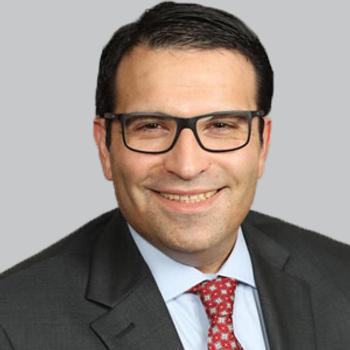Findings from a secondary analysis of the RESCUE-Japan LIMIT study (NCT03702413) showed that endovascular therapy (EVT) was not associated with improvement in functional outcomes at 90 days in patients post stroke with Alberta Stroke Program Early Computed Tomography Scores (ASPECTS) 3 or less and was associated with a significantly higher incidence of intracranial hemorrhage within 48 hours.1
Of patients with ASPECTS scores of 3 or less, 21.4% (n = 12) of those in the EVT group and 18.0% (n = 9) of those who did not receive EVT had a modified Rankin Scale (mRS) score of 0 to 3, considered good functional outcome (odds ratio [OR], 1.24; 95% CI, 0.47-3.26). In comparison, for those with ASPECTS scores of 4 to 5, 43.2% (n = 19) of patients on EVT and 7.7% (n = 4) of those without EVT achieved similar scores at 90 days (OR, 9.12; 95% CI, 2.80-29.70; P = .01).
Led by Takeshi Morimoto, MD, PhD, MPH, professor of medicine, Hyogo College of Medicine, Japan, the study aimed to compare the efficacy and safety of EVT according to ASPECTS scores of 3 or less vs those of 4 to 5. The original findings from RESCUE-Japan LIMIT suggested efficacy of EVT in patients with a large ischemic core—ASPECTS scores of 3 to 5—however, there was still a difference in disease severity in patients within that score range, and thus, the goal of this new assessment was to understand the threshold of when EVT stops being beneficial.
The study enrolled 203 patients from November 2018 to September 2021, with follow-up ending in December 2021. Consistent with the main report, the primary outcome of the study was an mRS score of 0 to 3 at 90 days after onset. After 1 patient withdrew consent, the final sample included 106 individuals (52%) with ASPECTS scores of 3 or less and 96 with ASPECTS scores of 4 to 5. The characteristics between the groups were numerically similar, although those with ASPECTS scores of 3 or less had larger infarction volume (126 mL vs 89 mL; P <.001) and higher median C-reactive protein values (0.25 mg/dL vs 0.13 mg/dL; P = .008).
Putting Pen to Paper: Executing on Approaches for Neurorestoration
Joe Kardine, MS, OTR, CBIS, the clinical program manager at the Jefferson Center for Neurorestoration, discussed the influx of new neurorestorative technology and the future of treating patients with functional loss.
Achievment of mRS score between 0 to 2 was also significant in those with ASPECTS scores of 4 to 5 (OR, 8.33; 95% CI, 1.73-40.0) but not in those with ASPECTS scores of 3 or less (OR, 0.42; 95% CI, 0.10-1.77; P = .003). The ordinal shift across the range of mRS scores toward a better outcome was also significant in those with ASPECTS scores of 4 to 5 (common OR, 4.48; 95% CI, 2.07-9.71) but not in those with ASPECTS scores of 3 or less (common OR, 1.56; 95% CI 0.79-3.10), and the differences in the effect were significant (P = .046). Additionally, at 48 hours posttreatment, improvement in National Institutes of Stroke Scale score in those with ASPECTS scores of 3 or less (OR, 3.83; 95%, 1.17-12.6) or scores of 4 to 5 (OR, 5.92; 95% CI, 1.96-17.8; P = .60).
For ASPECTS scores of 3 or less, symptomatic intracranial hemorrhage (sICH) occurred in 10.7% of those on EVT vs 6.0% of those without (OR, 1.88; 95% CI, 0.44-7.95). Of those with ASPECTS scores of 4 to 5, 6.8% experienced sICH in the EVT group compared with 3.8% in the no EVT group (OR, 1.83; 95% CI, 0.29-11.5). Conversely, the risk of ICH was more prominent in those with lower ASPECTS scores when EVT was conducted (OR, 4.14; 95% CI, 1.84-9.32) than those with ASPECTS scores of 4 to 5 (OR, 2.05; 95% CI, 0.89-4.73), but the interaction was not significant (P = .24).
REFERENCE
1. Uchida K, Shindo S, Yoshimura S, et al. Association between Alberta Stroke Program Early Computed Tomography Score and efficacy and safety outcomes with endovascular therapy in patients with stroke from large-vessel occlusion: a secondary analysis of the recovery by endovascular salvage for cerebral ultra-acute embolism-Japan large ischemic core trial (RESCUE-Japan LIMIT). JAMA Neurol. Published online October 10, 2022. doi:10.1001/jamaneurol.2022.3285.



































